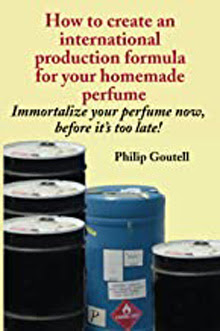
"Almost no perfume is complete without
a little Jasmine in one form or another"
-- The ABC's of Perfumery
a little Jasmine in one form or another"
-- The ABC's of Perfumery
Jean Patou's response to the Wall Street crash of 1929 was the creation of Joy perfume as a gift for clients who -- quite suddenly -- could no longer afford his pricey frocks. Advertised as "the world's most expensive perfume," Joy led the way for Patou's perfumes to carve out a successful business of their own during the dark Depression days, a business which continues today.
Joy, in its original, super-expensive version, is a bit heavy, a bit old fashioned, a bit too rich, to opulent for today's tastes. And a bit too expensive. Yet for the student of perfumery, Joy is one of those "must match" fragrances, a perfume that every student perfumer must make an attempt to recreate by nose alone, without access to the formula.
Loaded with costly jasmin, Joy was created for Patou by his long time perfumer, Henri Almeras who, so the legend goes, was appalled at the excess of expensive ingredients insisted on by Patou. In the history of perfumery, Joy is not considered to be a breakthrough perfume, it is not innovative nor is the theme original. But it is considered a legendary fragrance because of its history, because of Patou's daring to insist on excess, bright lights and joy at a time when others could see only darkness and gloom.
How hard is it to reconstruct Joy? Certainly not a job for the faint hearted. To work with the perfumery materials used for the original would be prohibitively expensive. And today the use of some of Joy's original aroma materials would be restricted or banned (safety, environmentalism, animal rights, etc.) Yet the student perfume can get a taste of the structure and aroma of Joy by simply following the highly simplified formula offered in The ABC's of Perfumery or Unit 5 of the PerfumersWorld Foundation Course.
If you were studying perfumery within one of the handful of giant fragrance creation houses, you would not be "given" a simplified formula like this, you would have to "discover" it yourself through your knowledge of raw materials and by using the power of your nose to match, with your aroma materials, the fragrance of Joy. This is certainly an ideal way to learn perfumery.
But for those of us who have other responsibilities, for those of us who are unable to devote all 24 hours of the day to perfumery, for those of us who do not have the good fortune of having been taken in by a major fragrance house to learn perfumery under the daily, personal tutelage of a master perfumer, the PerfumersWorld solution offers strong advantages.
While you might say that giving students a simplified Joy formula first -- before they have become familiar with the raw materials, before they have trained their noses to match materials, and in many cases before they have ever smelled the original -- is the wrong approach to teaching perfumery, I would argue the opposite.
By starting with a hands on project, with a series of small dropper bottles, mixing pots, and toothpicks to stir, the student quickly comes to appreciate (1) the structure of the perfume in terms of top notes, middle notes and base notes, and (2) the concept that a fine fragrance involves blending two or more raw materials together to produce a result which is more artistically beautiful than any of these materials taken alone.
Creating beautiful aromas is an art -- the perfumers art -- and by mixing formulas that are given to you in the beginning, you begin to appreciate the nature of the aroma materials themselves. Some have beautiful fragrances by themselves, others -- which are critical in fine fragrance creation -- you might at first think to flush down the toilet. Still others have little impact at all by themselves but play a vital role when combined with other aroma materials.
Some people say it takes seven years to become a perfumer. Some perfumers would say it takes a lifetime. Steve Dowthwaite has said it takes a single day -- the day you decide to become a perfumer.
But to create perfume you need aroma materials, and some instruction in perfumery basics to get you started. That's why Steve created the PerfumersWorld Foundation Course -- a home study course which provides all the tools needed to start the motivated perfumer-to-be on the path to becoming a mature perfumer.
Here's a footnote. The PerfumersWorld Foundation Course which comes with aroma materials, mixing pots, book, software, and lessons costs less than a half ounce bottle of "Jean Patou Joy Parfum Deluxe" at Bloomingdales.


What a very informative blog I wanted to try to make my own perfume that can easily customize the scent and make my own signature. Anyway, creating a perfume is not a simple matter so I need a lot of knowledge,if you have any suggestion please let me know.
ReplyDeleteisey